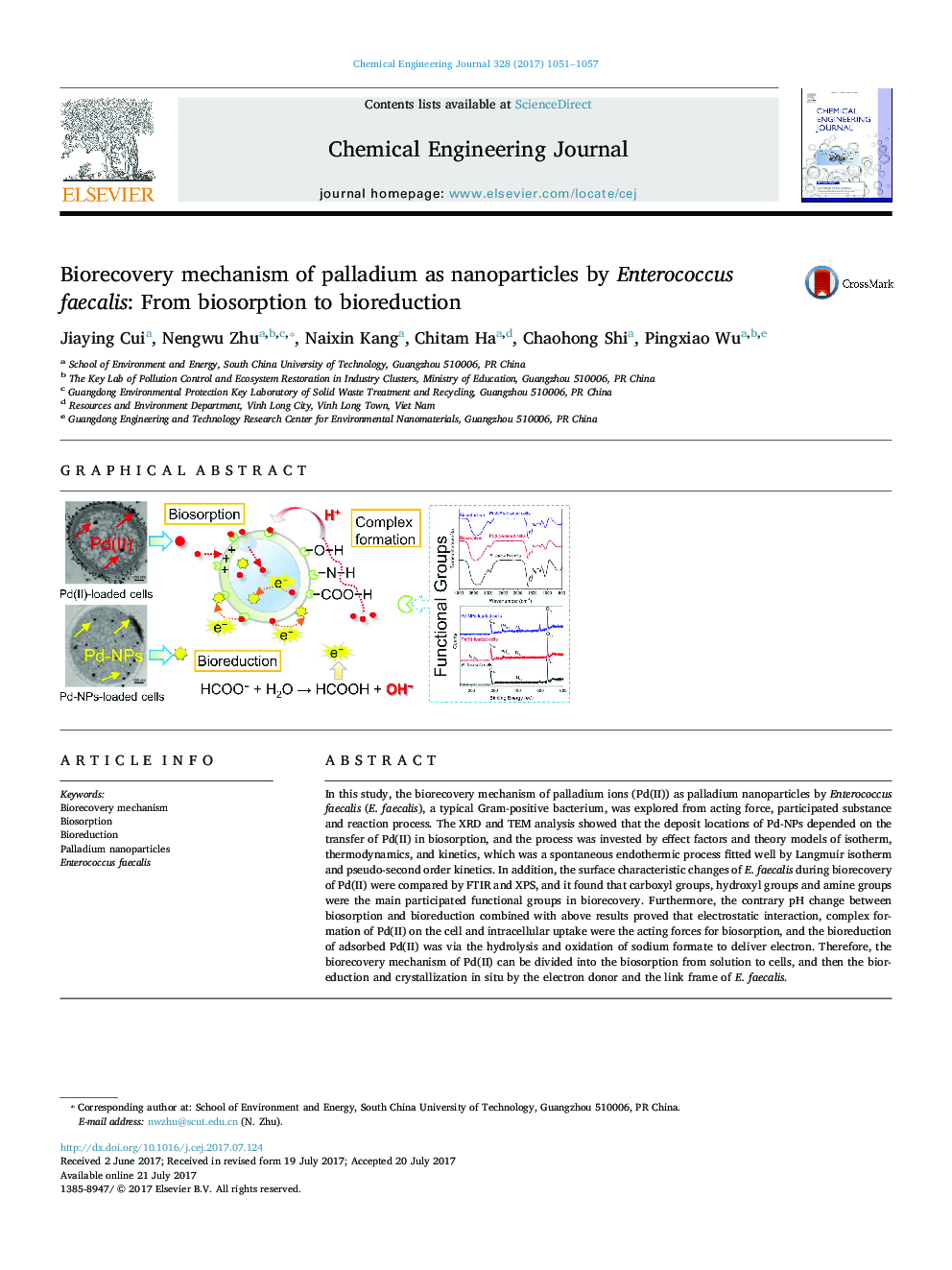| کد مقاله | کد نشریه | سال انتشار | مقاله انگلیسی | نسخه تمام متن |
|---|---|---|---|---|
| 6465301 | 1422950 | 2017 | 7 صفحه PDF | دانلود رایگان |

- The deposit locations of Pd-NPs depended on the transfer of Pd(II) in biosorption.
- The biosorption was a spontaneous endothermic process fitted well by Langmuir isotherm and pseudo-second order kinetics.
- The main functional groups for Pd(II) biorecovery were carboxyl groups, hydroxyl groups and amine groups.
- The bioreduction was via the hydrolysis and oxidation of sodium formate to deliver electron.
- The biorecovery of Pd(II) was via biosorption to cells and then bioreduction in situ.
In this study, the biorecovery mechanism of palladium ions (Pd(II)) as palladium nanoparticles by Enterococcus faecalis (E. faecalis), a typical Gram-positive bacterium, was explored from acting force, participated substance and reaction process. The XRD and TEM analysis showed that the deposit locations of Pd-NPs depended on the transfer of Pd(II) in biosorption, and the process was invested by effect factors and theory models of isotherm, thermodynamics, and kinetics, which was a spontaneous endothermic process fitted well by Langmuir isotherm and pseudo-second order kinetics. In addition, the surface characteristic changes of E. faecalis during biorecovery of Pd(II) were compared by FTIR and XPS, and it found that carboxyl groups, hydroxyl groups and amine groups were the main participated functional groups in biorecovery. Furthermore, the contrary pH change between biosorption and bioreduction combined with above results proved that electrostatic interaction, complex formation of Pd(II) on the cell and intracellular uptake were the acting forces for biosorption, and the bioreduction of adsorbed Pd(II) was via the hydrolysis and oxidation of sodium formate to deliver electron. Therefore, the biorecovery mechanism of Pd(II) can be divided into the biosorption from solution to cells, and then the bioreduction and crystallization in situ by the electron donor and the link frame of E. faecalis.
284
Journal: Chemical Engineering Journal - Volume 328, 15 November 2017, Pages 1051-1057